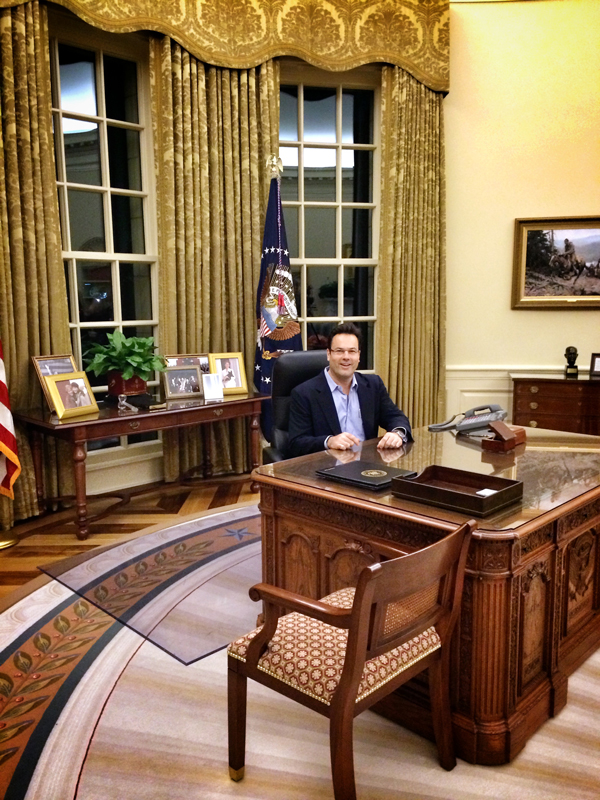Confidence fuels lots of progress. It is a catalyst to recognizing a bigger future. But it isn't the only way to get there.
Challenge and struggle often precede break-through performances.
Let's hope so ...

Imagine sitting in the Oval Office and reading this headline:
"Only 6 People Enrolled on Health Site's First Day - And just 248 were enrolled by second day."
If 'rough seas make skillful sailors,' our current administration should be getting better all the time.
Recently, I heard a story that caught my attention.
A congregant was chosen to perform a key ritual during an important religious service. That person was counseled and prepared on what to think, how to comport themselves, and what to say during their time in front of the audience.
When their 'spotlight moment' came, this person went blank - they forgot everything they were supposed to think, do, or say. Panic set in ... they were scared and desperate.
Nonetheless, it was their time -- and all eyes were upon them. So, they gathered up their courage and they did their best.
Afterwards, still feeling bad about all the things they forgot, what they didn't do, and what might've been ... person after person told them how well they did. Feeling guilty, they went to their spiritual leader to confess that, even though it seemed to go okay, it had not gone the way they were instructed.
The spiritual leader laughed and smiled, "each of the instructions you were given was like a key to a door or a gate, but the feeling of desire and longing that stemmed from your broken heart and the need to do better is a master key that opens all doors."
This same message plays itself out in so many levels and so many disciplines. In sales, and undisturbed prospect doesn't buy. In personal development, people don't change if they are happy with the way things are. In trading, risk control, diversification, and better money management often stem from big losses.
The master key to meaningful change, however, is ultimately internal. It happens when we are shaken out of our 'rut' ... and view things from a new perspective.
In many respects, it doesn't matter what happens; what matters is what you do.





This 'Illusion of Choice' Chart Shows Who's Really In Control
What happens doesn't matter nearly as much as what you what make it mean ... and what you choose to do.
Dallas got about an inch of ice and snow towards the end of last week, and we are still at a virtual stand-still five days later.
Growing up in New England, this would have been so minor that people wouldn't have called it a 'storm'. Because ice is so rare here, and we don’t have sanding, salting, or scraping capabilities (or people skilled enough to be comfortable driving in it) this was a Storm.
As a result, the best plans gave way to the shut-down.
Snow isn't 'good' or 'bad' ... and neither was the change of plans.
Perspective.
Fund managers recognize the importance of sensibly diversifying risks and opportunities.
Be that as it may, as MotherJones reported in the wake of the financial crisis, the nation's 10 largest financial institutions held 54% of our total financial assets (compare that to the 20% they held in 1990). Meanwhile, the number of banks has dropped from more than 12,500 to about 8,000.
Here is a map, from the Federal Reserve, that shows the consolidation. Click to see a bigger version.
The infographic, above, shows how 37 banks have merged to become just four — JPMorgan Chase, Bank of America, Wells Fargo and CitiGroup (in a period of barely two decades).
Many people are shocked by a chart like this. It must be 'bad' to have so much controlled by so few, right?
But it isn't hard to find a version of this story playing-out in other industries: Print Media, Music, Broadcast Channels, Consumer Products ... this type of consolidation happens for a reason.
A firm that marshals that more resources gains competitive advantage and has more ways to win.
They benefit from economies of scale, transactional leverage, better distribution and partners, and more ways to diversify risks. In addition, if they work to communicate, collaborate, and coordinate their actions (and data) they can unlock opportunities that others simply don't have (or can't see).
Here is a Chart Showing Some of the 'Winners' at that Game.
The following chart highlights our "Illusion of Choice". A surprisingly big portion of what you buy comes from one of these 10 mega-companies (Kraft, Coca-Cola, PepsiCo, Kellog's, Nestlé, Proctor & Gamble, , Mars, Johnson & Johnson, General Mills, and Unilever).
It's amazing to see what these giants own or influence. Click the picture to see a bigger version.
via Reddit.
Here is a more specific example. You probably think you are familiar with Nestlé. It is famous for chocolate; but did you realize it was $200 billion-corporation ... and the biggest food company in the world? Nestlé owns nearly 8,000 different brands worldwide, and takes a stake in (or is partnered with) many others. Included in this network is shampoo company L'Oreal, baby food giant Gerber, clothing brand Diesel, and pet food makers Purina and Friskies.
Kind of cool?
Posted at 12:04 AM in Business, Current Affairs, Market Commentary, Trading, Trading Tools | Permalink | Comments (0) | TrackBack (0)
Reblog (0)